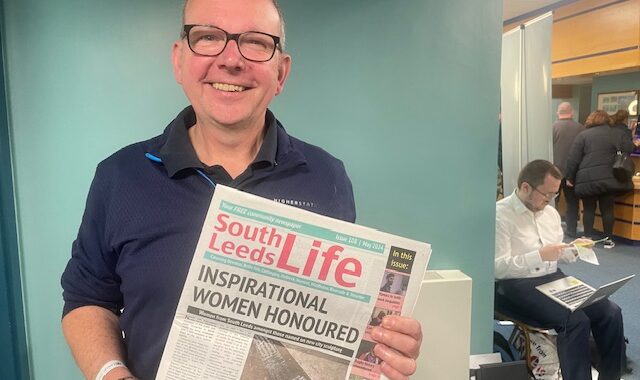A report based on the largest ever survey of UK hyperlocal news producers has been published.
In November last year a research team I’m involved with launched a survey of hyperlocal community news producers. We wanted to find out what kinds of news hyperlocal sites produce, what democratic roles their news might play, and how successful and sustainable these news services actually are.
183 people filled in the survey, making it the biggest of its kind in the UK ever. Numbers have been crunched, findings analysed, and the report is now ready for release. It can be downloaded in PDF form here, or viewed online here.
There are lots of findings, as it’s quite an empirically rich report, but here are what I think are some of the most interesting nuggets.
We thought it was important to find out a bit about who produces community news, and how they describe what they do. We found that the UK community news sector is well-established, and dominated by players who have achieved a degree of longevity (nearly three quarters of our sample of 183 producers have been producing news for over three years, and nearly a third for more than five years).
Seven out of ten producers see what they do as a form of active community participation, over half see it explicitly as local journalism, and over half as an expression of active citizenship. Interestingly, almost half of our participants have journalistic training or experience working in the mainstream media in some form.
Also central to the research was looking for trends in what gets published as local community news. We found that community news sites cover a wide variety of local news that is potentially of both civic and cultural value, including a lot of news about local community groups and events, and local government issues (particularly planning). Filling in gaps in the research left by an earlier content analysis of hyperlocal news, we also found that many community journalists produce campaigning and investigative news: nearly three quarters of respondents have covered local campaigns instigated by others, and well over a third have instigated their own (issues relate mostly to planning disputes, cuts to local public services, improvements to local amenities, and local council accountability); and despite often lacking much institutional and professional support, a significant minority have also carried out local watchdog investigative journalism.
We learned some useful lessons about hyperlocal audiences and how producers interact with them. More than two thirds of hyperlocal news producers have knowledge of basic audience stats for their sites such as monthly unique visitors and page impressions. Most hyperlocal news sites suffer from a lack of visibility in their own communities, with only very few reaching a high percentage of their potential local audiences. But despite the visibility problem, large majorities of hyperlocal news producers continue to see audience growth on their own websites, as well as on key social media platforms. Overall, there is a small group of high-performing community news sites reaching significant audiences of between 10,000 and 100,000 monthly “uniques”, but most reach quite modest audiences (the median number of monthly unique visitors is 5039). Nine out of ten of producers use Twitter and 79 per cent use Facebook for their community news activities.
The economic sustainability of hyperlocal news remains a conundrum, of sorts. Around a third of our participants make money, mostly quite modest amounts: 12 per cent say they make less than £100 per month, for instance, but 13 per cent say they generate more than £500 per month. How are they making this money? Advertising is the dominant form of income generation, but a number of other methods are employed such as eliciting sponsored features or getting grant funding. Most community news producers fund the running costs of their sites from their own pockets, but around one in four raise enough money to cover their costs or more. But despite the low proportion of economically successful community news producers, nine out of ten still believe they can sustain, or increase, current levels of output in the coming year. Indeed, most producers are not motivated by economic gain and are happy to continue working on a volunteer basis. It remains the case, however, that the overall lack of revenues being generated could threaten the longer-term sustainability of hyperlocal publishing. Many told us that if they were unable to continue working on their sites in the future the news services would probably close.
After all, most community news producers work part-time on their sites (57 per cent work up to ten hours a week and 26 per cent work between 11 and 30 hours); a minority work full-time, with 11 per cent putting in more than 40 hours a week. Many community news operations are participatory and collaborative efforts, so we also needed to get an idea of the overall hours worked including the labour of supporters and/or other employees. Factoring in the work done by other team members, just over four sites in ten (43 per cent) are the product of relatively few hours worked (ten hours or less per week). The rest are more time-consuming, with a third demanding 21-50 working hours per average week, and a quarter more than 50.
Looking to the future, an despite the somewhat gloomy news around economic sustainability, eight out of ten respondents have ambitions to expand their sites. Many would like to post more frequently, use more multimedia content, and elicit more material from their audiences. Most commonly cited areas for expansion were local information and coverage of community groups and events. Without restrictions on time or money, the main targets for site improvement were: technical website issues; engaging with audiences more on social media; selling ads and generating revenue; cultivating a larger community of active contributors. However, most community journalists feel very time poor, with nearly three quarters citing lack of time as a bar to future expansion. In terms of the kind of help and support they would like if any were on offer, six out of ten say they would like help with generating revenues to fund their own time, and with marketing and promoting their site to drive audiences up. Half would like help with selling advertising.
Download the Hyperlocal Report.
The report is the result of a collaboration between two different AHRC-funded projects: the Media, Community and the Creative Citizen project, based at Cardiff and Birmingham City Universities; and the Media Power and Plurality project, based at the University of Westminster. It was written by Cardiff University’s Dr Andy Williams, Westminster University’s Prof Steven Barnett and Judith Townend, and Birmingham City University’s Dave Harte. If anyone would like further information please contact the lead author Dr Andy Williams (email: [email protected], @llantwit on Twitter).
Image accompanying this article is copyright brianac37.




